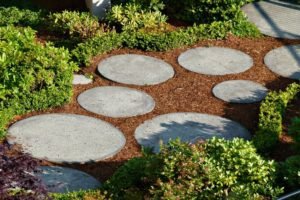
Developing a landscape garden
While designing may be key to any concept, it is the development phase that turns an idea into reality. The term ‘landscaping’ was simply coined to express a free-flowing movement of peace and maintaining a good atmosphere. It is rightly said that “Good gardens don’t just happen. It is a result of intricate execution.” Developing an experience requires choosing the appropriate plants that are long lasting, giving it the proper dimension it requires and then observing. Landscaping is as easy as following the three basic steps:

Point of Interest
It is essential to begin with a focal point that can grab eyeballs. The key to this is choosing something different from the rest of your landscape that will stand out. But the trick lies in knowing the difference between standing out and sticking out. Point of interests can be anything from the art of topiary, a statue, a water fountain, a bench or even the building itself. While topiary helps you to add depth by figures or accents, fountains add a sensory experience both making the surrounding calm and serene, while ensuring less maintenance.

Co-ordination
The next step is knowing what works and what does not and believing in it. Colorful flowering, while extremely attractive to look at, not all are long lasting and wither away easy. The key to an evergreen landscape garden is choosing the right plants that are slow growing, can sustain different weather changes and are bound to last for longer durations.

Keeping it Simple
Lastly, ‘Less is More!’. Negative spaces can be utilized for purposes like pathways, separating different flower beds, marking different areas etc. A good landscape doesn’t have a lot of things in one place but rather a few things with the necessary gaps and spaces all carefully articulated and working together.
